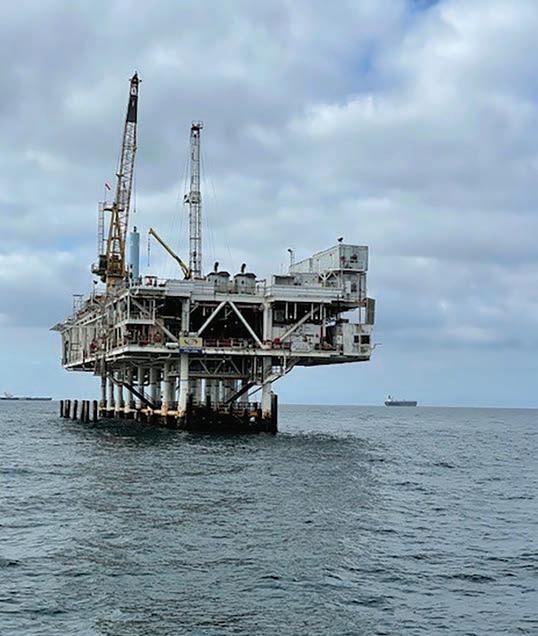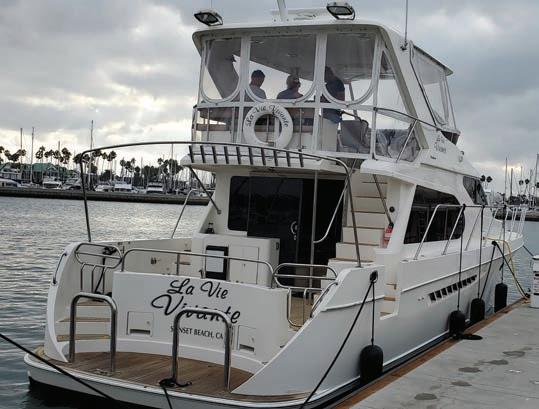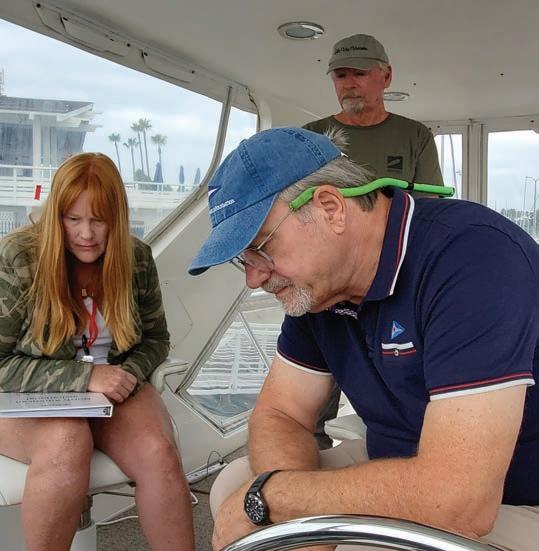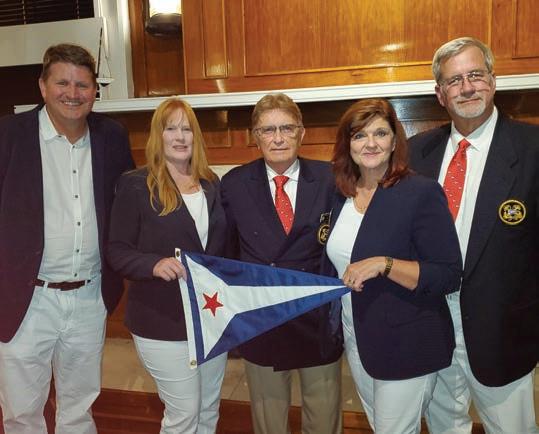
4 minute read
2022 NORTH AMERICAN INVITATIONAL
OUR EXPERIENCE: 2022 NORTH AMERICAN INVITATIONAL
BY LOREN WOLF
Imagine you are in an unfamiliar body of water; you do not know the tides and currents, and you certainly are not familiar with the shoreline and navigational marks in the area. Now, you are asked to predict how long it will take you to go from point A to point B, B to C, etc., over a course that is 30 nautical miles and approximately four hours long. Did I mention that you are limited in the use of your electronic navigational tools (certainly no timepieces), and you are on a boat that is totally unfamiliar to you? Welcome to the North American Cruiser Association (NACA), North American Invitational (NAI) 2022 in Long Beach, California. For the second year in a row, CYC navigational rally champions, Kenn and Loren Wolf, represented the Chicago Yacht Club at the NAI along with a team of fellow CYC rally contestants, Dave and Laura Zehner and Walter “Sonny” Lisowski. This year’s 30 nautical mile course consisted of 15 waypoints (marks). The marks included ranging channel markers that were approximately five nautical miles away, looking for a white Racon buoy when in reality it appeared to be a red buoy because it had lost most of its paint and; looking for a light pole that was hidden in the vegetation on the shore of an island. Contestants were provided with the course a few weeks before the actual contest. Kenn plotted the course using Coastal Explorer program to develop a list of course headings and distances to each mark. I would be calling the marks for the team and spent my time looking at as many Google Earth photos as I could find to visualize the marks as described in the course material. Not everything is on Google Earth! Rally rules had two unusual twist this year: 1) contestants were able to use a GPS speedometer 2) they could ask the race committee observer (timekeeper) what the clock time was at each mark. The helmsman would be able to determine if he/ she was going too fast or slow with respect to their predicted time, and this would add a whole new set of calculations that had to be made on the fly. A team effort was definitely needed to run this course. Kenn was the helmsman and leader of the team. Laura assisted Kenn by giving him the calculated headings and speed for each leg. Dave was the statistician and kept watch with the range finder to make sure we were at the prescribed distances from each mark. The range finder could not take a reading through the isinglass enclosure of the fly bridge so Dave got his exercise that day by running up and down the stairs to the fly bridge. Maintaining the proper distance from the marks is an integral part of the contest. Sonny was recruited from our team to serve as an observer on another boat. During the competition, he protested the distance from a mark of one of the contestants. Ultimately, that captain was able to prove
he was within the prescribed distance and went on to win the rally with only a .58% error! Members from the Long Beach Yacht Club volunteered the use of their boats for the rally. Boats were assigned to the contestants by luck of the draw. Two days before the contest, we were given four hours to become familiar with the performance of our assigned boat, La Vie Vivante.
Kenn put the boat through measured mile time trials at various RPMs to determine optimum running speed. This proved to be a little challenging because the mechanical tachometers were mounted absolutely flat, about 2.5 feet apart, on the horizontal surface of the helm. Kenn had to stand and move side to side to view the tachs and try to synchronize the engines. Finally, he gave up and went by the sound of the engines. Another part of our trial run was to determine the turning radius of the boat. As we were making hard-over turns, the owner came up from down below and politely asked Kenn if he was planning on making a lot of tight turns during the contest. Kenn explained that he just needed to get an idea of the turning radius, port versus starboard and asked him why. The owner calmly explained that the packings were leaking and water was coming in every time he made a hard-over turn!
On race day, we were ready to go. Kenn and Laura were constantly adjusting the throttles to maintain our predicted speed. Speed and course adjustments had to be made to compensate for wind, current and Long Beach boat traffic. One course heading had us calling a mark that was the center point between two oil platforms that were about two miles apart. Our heading was a diagonal line between the two platforms (the designer of the course purposely made this a difficult mark to call). Kenn and I had a discussion as to how I was going to make this difficult call. Kenn came up with a very “high-tech” solution - use the edge of a piece of paper over the radar screen to line up the two platform images, and call the mark when the icon for the boat appears at the edge of the paper. We nailed it exactly! It was a fun and challenging day on the water! The Long Beach Yacht Club was a great host and our thirdplace finish with 1.285% error off of our predicted time was the icing on the cake. ✶

“La Vie Vivante”

Captain Kenn Wolf and Laura Zehner on the day of the contest











